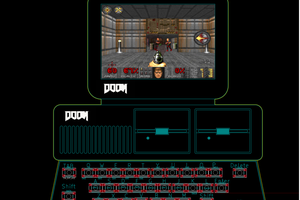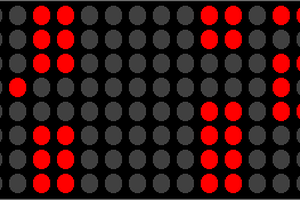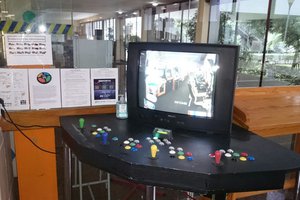This year’s conference badge was designed and developed by Jay Margalus and Rudy Ristich from Workshop88, in collaboration with university students from the DePaul Consulting Group. DCG was presented with design and development constraints given a game-centric badge; the output screen in correspondence with input buttons and the WiFi capable ESP8266 chip with 4096 bytes of memory. The higher-ups of ThotCon also requested the badge resemble a key, making it consistent with the theme of the conference.
Students from the DCG that were studying graphic design addressed the physical constraints with a portrait-mode layout. This placed the screen at the widest part of the badge, with a cut-out centered atop, so it may be attached to a lanyard, much like a traditional key. The buttons are placed directly under the screen to keep the attendees’ palms away from the cuts of the key and the micro-USB port that was intended to be utilized for dumping and analyzing the binary.
After receiving sixteen prototype boards from Mouser, Jay, Rudy, and the DCG soldered OLED screens, capacitors, resistors, and buttons onto the boards. The resident game designers and software developers of DCG then collaborated with the graphic designers on the second round of requests from higher-ups, which included an over-arching War Games (1983) theme. Programming in Arduino while utilizing the OLED display library u8g2, the theme was represented through a Tic-Tac-Toe-like menu system, where game tokens would change based on in-badge purchases and completed games. Besides in-badge augmentations for multipliers to aid in mining for the ThotCoin, an external augmentation inspired by Twitch Plays Pokémon, allowed the attendees to control an ongoing game of Pokémon, from their badges.
 Lily Fisher
Lily Fisher
 AVR
AVR

 rudy
rudy
 SCART VADER
SCART VADER